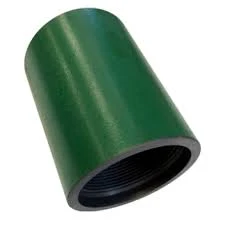- Afrikaans
- Albanian
- Amharic
- Arabic
- Armenian
- Azerbaijani
- Basque
- Belarusian
- Bengali
- Bosnian
- Bulgarian
- Catalan
- Cebuano
- Corsican
- Croatian
- Czech
- Danish
- Dutch
- English
- Esperanto
- Estonian
- Finnish
- French
- Frisian
- Galician
- Georgian
- German
- Greek
- Gujarati
- Haitian Creole
- hausa
- hawaiian
- Hebrew
- Hindi
- Miao
- Hungarian
- Icelandic
- igbo
- Indonesian
- irish
- Italian
- Japanese
- Javanese
- Kannada
- kazakh
- Khmer
- Rwandese
- Korean
- Kurdish
- Kyrgyz
- Lao
- Latin
- Latvian
- Lithuanian
- Luxembourgish
- Macedonian
- Malgashi
- Malay
- Malayalam
- Maltese
- Maori
- Marathi
- Mongolian
- Myanmar
- Nepali
- Norwegian
- Norwegian
- Occitan
- Pashto
- Persian
- Polish
- Portuguese
- Punjabi
- Romanian
- Russian
- Samoan
- Scottish Gaelic
- Serbian
- Sesotho
- Shona
- Sindhi
- Sinhala
- Slovak
- Slovenian
- Somali
- Spanish
- Sundanese
- Swahili
- Swedish
- Tagalog
- Tajik
- Tamil
- Tatar
- Telugu
- Thai
- Turkish
- Turkmen
- Ukrainian
- Urdu
- Uighur
- Uzbek
- Vietnamese
- Welsh
- Bantu
- Yiddish
- Yoruba
- Zulu
Januari . 10, 2025 12:32
Back to list
casing pup joint
When selecting the right pup joints for any oilfield operation, it is crucial to understand the comprehensive specifications that ensure compatibility, durability, and efficiency. Pup joints, being an essential part of the oil and gas industry, are used to adjust the length of the drill string or tubing when specific spacing or alignment is necessary.
Pressure ratings for pup joints must match or exceed the system's demands to ensure safety and functionality. Rated in PSI, the maximum operating pressure indicates the highest pressure the pup joint can withstand without risk of failure. It is paramount to understand the operating conditions and select pup joints that accommodate these pressures. A notable consideration in pup joint manufacturing is the heat treatment process. Through processes such as quenching and tempering, manufacturers enhance the mechanical properties of the steel, improving toughness and resistance to external stressors. This step is critical to increasing the lifespan and reliability of pup joints in challenging environments. Traceability and certification are important when procuring pup joints. Reliable manufacturers provide detailed documentation proving conformity with industry standards such as API 5CT or API 7-1. Certification ensures that the pup joints have undergone rigorous testing and meet the necessary quality benchmarks for safe use in oilfield applications. By focusing on these detailed specifications, companies can ensure they are selecting pup joints that meet their operational needs, ensuring optimal performance and safety in both routine and demanding applications. Such meticulous selection will not only reduce downtime and maintenance costs but also foster a safer, more reliable extraction process, thereby maximizing productivity and profitability in the oil and gas sectors.


Pressure ratings for pup joints must match or exceed the system's demands to ensure safety and functionality. Rated in PSI, the maximum operating pressure indicates the highest pressure the pup joint can withstand without risk of failure. It is paramount to understand the operating conditions and select pup joints that accommodate these pressures. A notable consideration in pup joint manufacturing is the heat treatment process. Through processes such as quenching and tempering, manufacturers enhance the mechanical properties of the steel, improving toughness and resistance to external stressors. This step is critical to increasing the lifespan and reliability of pup joints in challenging environments. Traceability and certification are important when procuring pup joints. Reliable manufacturers provide detailed documentation proving conformity with industry standards such as API 5CT or API 7-1. Certification ensures that the pup joints have undergone rigorous testing and meet the necessary quality benchmarks for safe use in oilfield applications. By focusing on these detailed specifications, companies can ensure they are selecting pup joints that meet their operational needs, ensuring optimal performance and safety in both routine and demanding applications. Such meticulous selection will not only reduce downtime and maintenance costs but also foster a safer, more reliable extraction process, thereby maximizing productivity and profitability in the oil and gas sectors.
Next:
Latest news
-
Tubing Pup Joints: Essential Components for Oil and Gas OperationsNewsJul.10,2025
-
Pup Joints: Essential Components for Reliable Drilling OperationsNewsJul.10,2025
-
Pipe Couplings: Connecting Your World EfficientlyNewsJul.10,2025
-
Mastering Oilfield Operations with Quality Tubing and CasingNewsJul.10,2025
-
High-Quality Casing Couplings for Every NeedNewsJul.10,2025
-
Boost Your Drilling Efficiency with Premium Crossover Tools & Seating NipplesNewsJul.10,2025
Related Products






